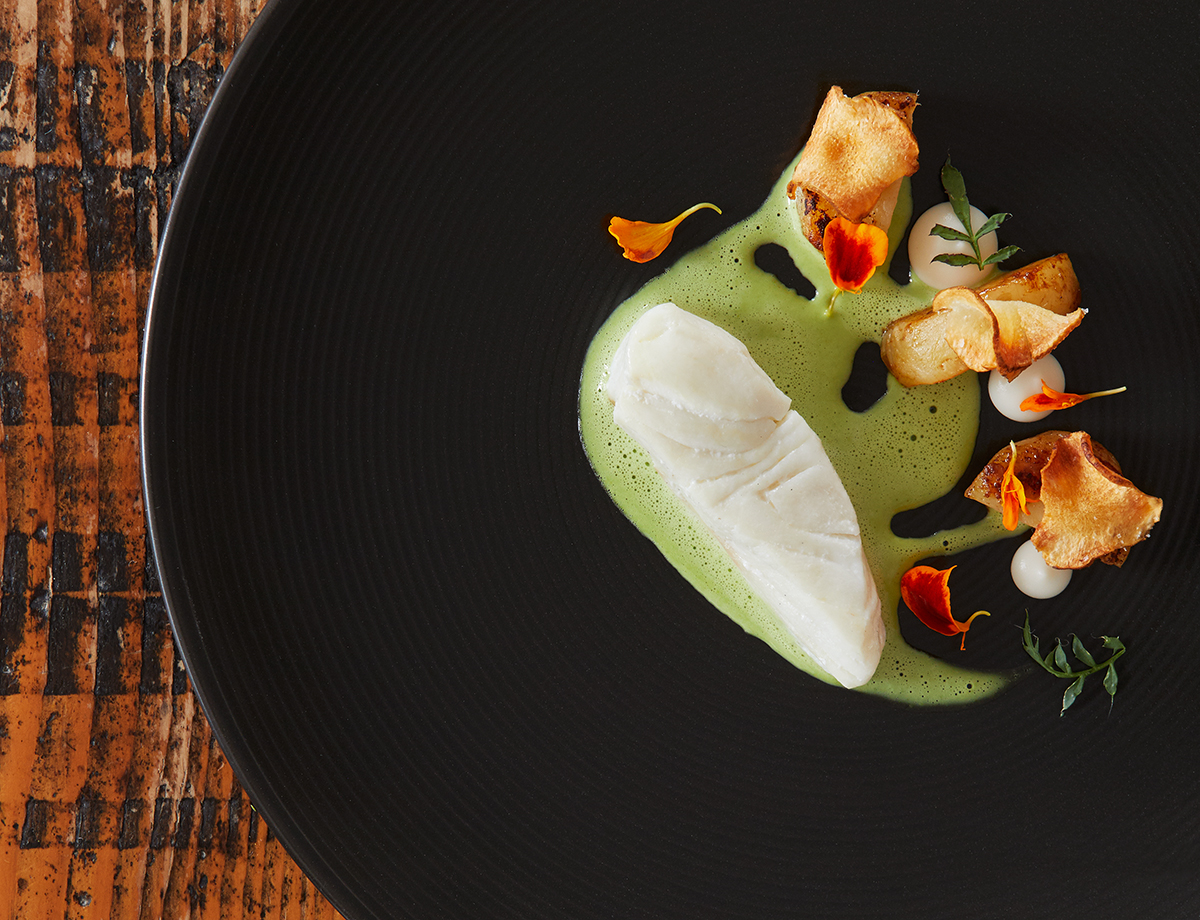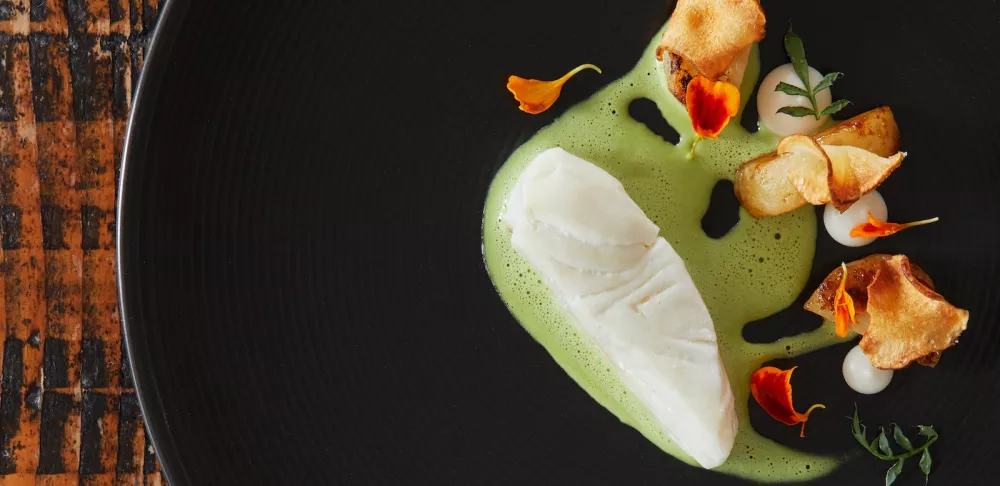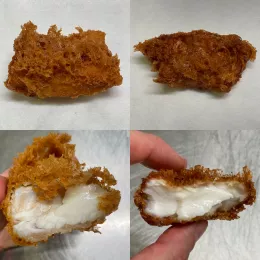I developed this dish as a nod to two of my favorite ingredients, wild Alaskan Halibut and sunchoke. Both ingredients have a history of being overlooked. Here, I aim to give them their rightful place at the center of the plate.
Both ingredients have had their culinary limelight shunned, but together they shine. Changing perceptions of delicious ingredients is something I believe to be critical in food research and development.
Halibut has certainly shifted in popularity over the last 150 years. In the early 1900s, it was known as a "workhouse" fish, fed to the poor industrial workers and reluctantly eaten despite its coarse texture and susceptibility to dryness. Post World War I, chefs in Europe began to pay more attention to the enormous flatfish and would pair halibut with rich and decadent flavors such as the then-trendy hollandaise. Now, halibut is heavily prized and highly expensive. In the Atlantic, it's off-limits to U.S. fishermen and can only be sold bycatch (caught unintentionally). Over-fishing led to a depleted stock and has been the driving force behind a Californian farmed species.
Alaskan halibut is available from fishmongers and wholesalers, and you may find it next to the farmed variety in reputable fish markets. The wild variety is superior in quality and size and more expensive than farmed.
There is nothing more satisfying as a cook than to take simple, humble, often overlooked ingredients and showcase their beauty.


Ingredients
- 115 grams halibut filet, skin off
- Salt, as needed
Roasted Sunchokes
Ingredients
- 2 sunchokes, peeled
- Butter, as needed
- Salt, as needed
- White pepper, as needed
Directions
- Pan roast the sunchokes in foaming butter until lightly browned and tender. Season well with salt and pepper.
Sunchoke Puree
Ingredients
- 300 grams sunchokes
- 50 grams heavy cream
- Salt, as needed
Directions
- Peel sunchokes and cut into 1 cm slices.
- Add heavy cream and a pinch of salt to a vacuum bag and cook sous vide at 185 C/365 F for around 2 hours or until tender.
- Blend in Vita-Prep until extremely smooth. Check seasoning.
- Place into squeeze bottle for use.
Sunchoke Chip
Ingredients
- Sunchokes, washed
- Canola oil (or other high smoke point oil)
- Maldon sea salt
Directions
- Heat oil temp to 150 C/300 F.
- Finely slice sunchoke on Japanese mandolin.
- Fry sunchoke sliced in batches until crisp and evenly golden brown.
- Season with Maldon sea salt.
Marigold Sauce
Ingredients
- 15 grams brunoise shallot
- 10 grams clarified butter
- 75 milliliters Noilly Prat
- 200 milliliters fish stock
- 100 grams heavy cream
- Salt
- 90 grams marigold leaves
Directions
- Heat small saucepan and add clarified butter.
- Sweat shallots until softened.
- Add Noilly Prat and reduce by half.
- Add fish stock and reduce by half.
- Add heavy cream and heat for a few minutes until flavors have combined.
- Season well.
- Pass through a chinois. Chill.
- Blanch marigold leaves for 10 seconds in boiling water, strain into iced water.
- Drain well and place into a Vita-prep, puree until smooth.
- Pass puree through a tamis.
- When needed mix the marigold puree with the fish cream and season well.
- Heat gently and aerate with Bamix.
Assembly
- Season fish and steam at 70 C/158 F for 7 minutes until just cooked.
- Place on the plate, seasoning with Maldon sea salt.
- Spoon the marigold sauce onto plate.
- Add the sunchoke puree.
- Roast sunchokes and plate.
- Top with sunchoke chip and marigold petals.
Study seafood and seasonal cooking in Culinary Arts.




